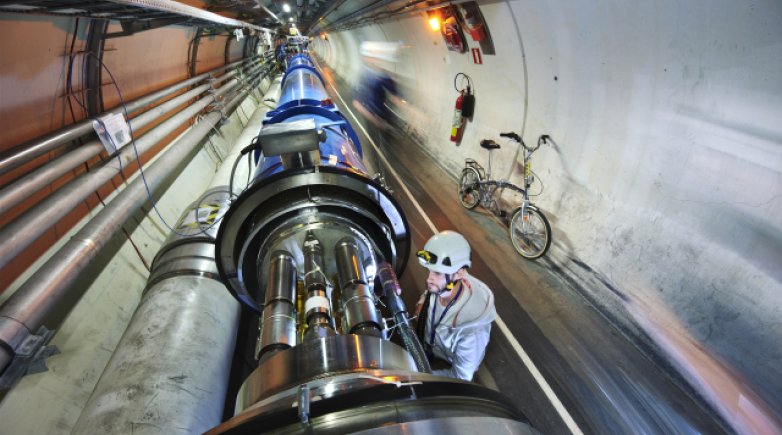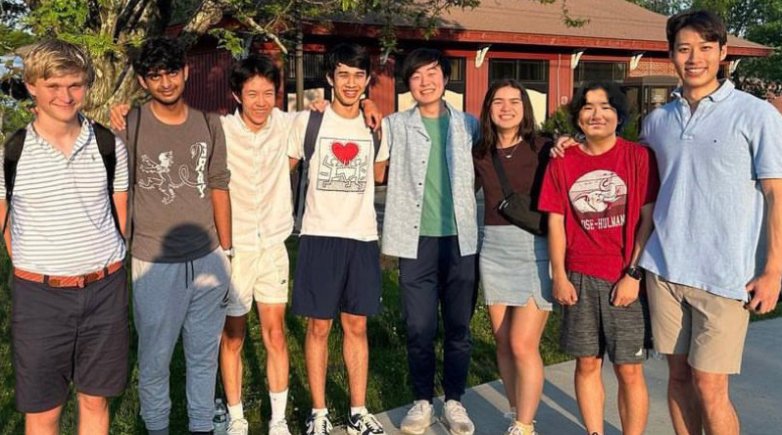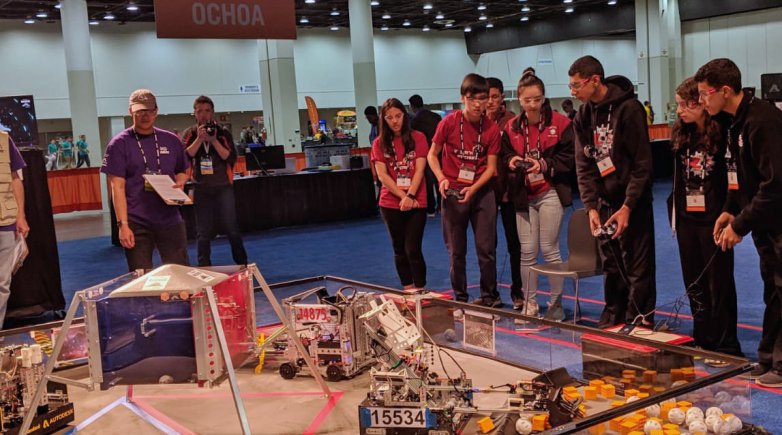The power of discovery
Physics students put hypothesis to the test at CERN
CERN, the European Organization for Nuclear Research, is home to the world’s largest particle accelerator and only antimatter factory, and, for two weeks in September, eight extremely excited Exonians.
In the final months of 2022, our Myriad Magnets team — Daniel Jeon ’23, William Lu ’24, Peter Morand ’25, Achyuta Rajaram ’24, William Soh ’24, Isabella Vesely ’23, Ishaan Vohra ’24 (our team lead) and Aubrey Zhang ’23 — met regularly to develop a research proposal for CERN’s Beamline for Schools competition. Our 14-page submission presented a design for an original and modular mechanical setup to replace the high-energy-consuming electromagnets used in all accelerators.
 CERN is a major consumer of electricity. A massive portion of this consumption comes from powering all the electromagnets, which bend and focus the particle beams, needed to run the massive accelerator complex.
CERN is a major consumer of electricity. A massive portion of this consumption comes from powering all the electromagnets, which bend and focus the particle beams, needed to run the massive accelerator complex.
Our proposal sought to instead use permanent magnets in special geometric formations — no electricity needed.
In July, our plan was one of three winning entries chosen from hundreds of submissions from student groups in over 60 countries. We were invited to test our proposal at the global epicenter of physics among some of the best scientists in the world.
Three-quarters of the way through our stay in Switzerland, our team trickled into our morning meeting room. Some arrived after team breakfast, others after waking up from eventful late nights of work. We started our day together in hybrid fashion with our support scientists and the other two winning teams, Pakistan’s Particular Perspective at CERN, and the Netherlands’ Wire Wizards working at DESY, Germany’s largest accelerator center. After checking in with everyone, we dived in: How is our physics going? What’s going well? What setbacks is everyone facing? Not a single day had passed without an answer to this final question. We discussed and brainstormed as one big team before setting plans for the day. With only three more days of access to the beam, we had zero time to waste.
 A short time later we settled into our shifts across the CERN campus. For the rest of the day, subteams rotated to allow each team member to fully explore all parts of the experiment.
A short time later we settled into our shifts across the CERN campus. For the rest of the day, subteams rotated to allow each team member to fully explore all parts of the experiment.
Members from the Exeter and Pakistani teams rushed to the test beam control room to check the overnight data and prepare the day’s experiments. We were lucky: Particles came through as expected, and our complex setup with numerous particle physics-specific detectors suffered from no major errors (a true rarity). The calmer aura of this morning was mildly misleading — it was a major development from the beam shifts of the days prior. Since our first day, those assigned to beam shift could expect two hours of intense problem-solving led by our support scientists. From fixing data collection and software concerns to examining mechanical components and detectors that randomly stopped working, each shift was a unique experience at the center of computer, electrical and mechanical engineering in physics.
A few buildings over, a group of students headed to a data analysis session. There we learned the ins and outs of CERN’s data analysis library, called ROOT, from CERN scientists and engineers. Some of our mentor scientists prepared physics and data analysis-specific programming exercises, often using real data from older runs, while other mentors stayed throughout the day to help debug, answer our many questions and offer new ideas to ponder. Ready to start putting our new techniques to the test, we began analyzing our own data. All of our team’s analysis sessions that day consisted of translating numbers into useful methods of understanding our magnet arrays’ effectiveness.
At Exeter, our physics club often looks to show how physics is fun in unconventional ways. CERN’s Markus Joos, our program’s technical coordinator, has perfected a similar pedagogy. In “playground” sessions, he shared his decades of experience working on some of CERN’s largest experiments. Amid CERN stories and general experiment questions and answers, we explored the inner workings of the detectors and computer systems that underlie our own and CERN’s most elaborate experiments. We worked as a team to create a cosmic muon detector, using scintillator detectors to expose the fundamental subatomic particles raining down on us from cosmic radiation.
Our time in the playground enhanced our understanding of the inner mechanisms of our experiment and even inspired new ideas — including a new magnetic mangle design and the possibility of a detector to measure the random positively charged beta particle emission of bananas (a project shaping up to become a senior project for Achyuta Rajaram and William Lu)!



